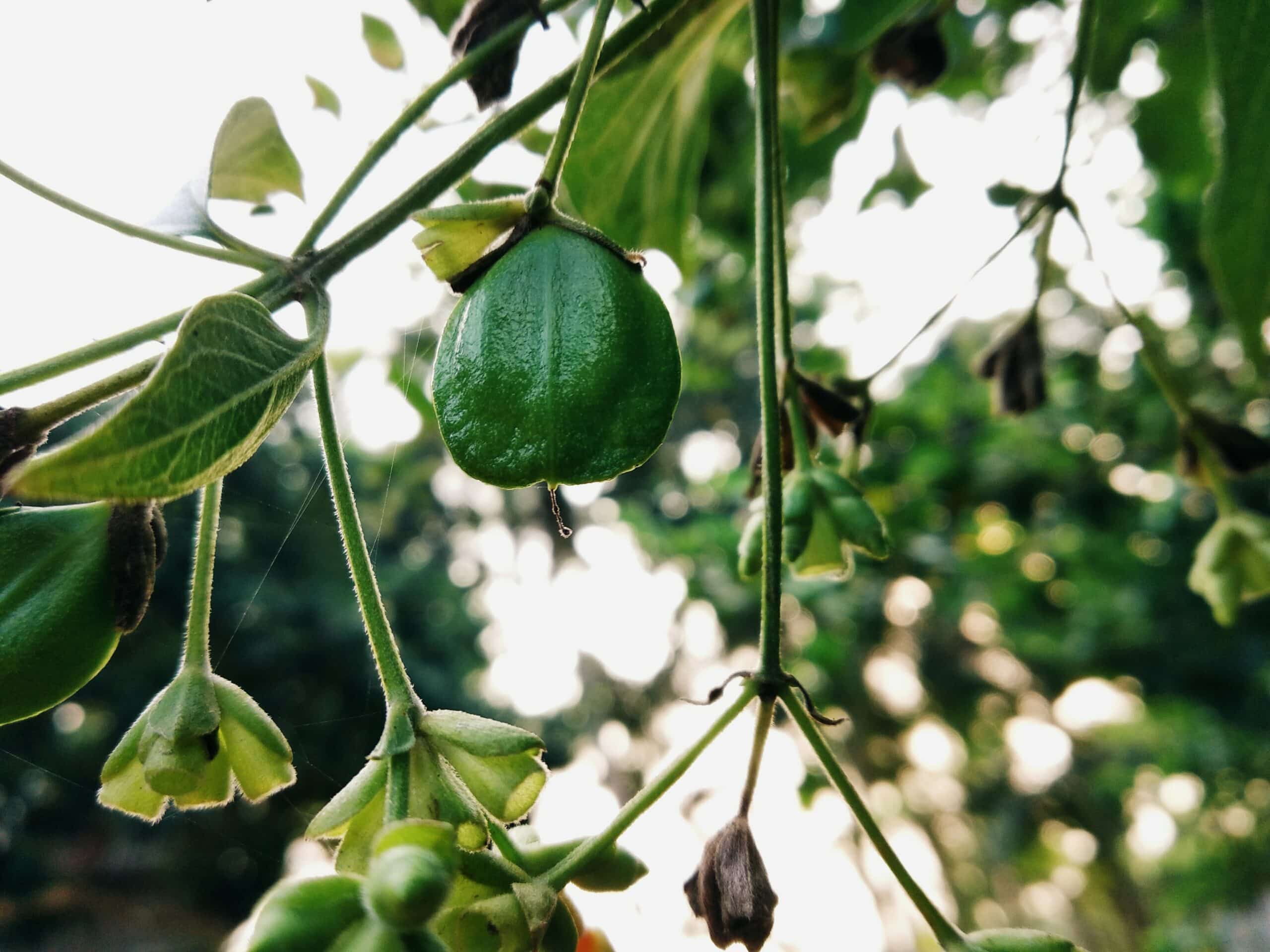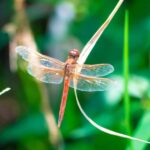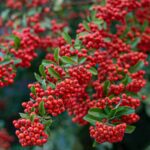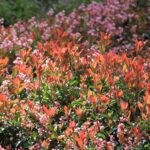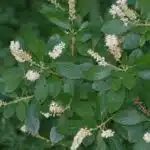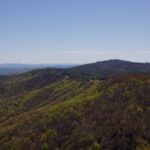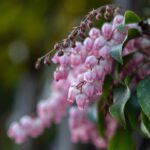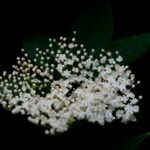When it comes to gardening, Nandina is one of the most beautiful and resilient plants that can be found in any garden. Its vibrant green leaves, its red berries, and its ability to withstand extreme temperatures make it a suitable addition to any landscape. It is also known as Firepower Nandina due to its ability to thrive in adverse conditions, much like a blazing fire.
The Firepower Nandina is a plant that requires special attention when it comes to planting and caring for it. In order for this plant to reach its full potential and continue to thrive year after year, certain steps must be taken in terms of where it is planted and how well it is cared for. Fortunately, with the right knowledge and effort, anyone can successfully grow and care for their own Firepower Nandina plants.
This article will provide step-by-step instructions on how to choose the right location and soil type for your Firepower Nandina; how to prepare the soil before planting; how often you should water your plants; what kind of fertilizers are best suited for them; and lastly, some tips on pruning techniques so that you can keep your plants looking healthy all year round. With these helpful suggestions, anyone can become an expert at taking care of their own Firepower Nandina plants!
What Is Firepower Nandina?
If you want to have a garden that stands out, you should consider growing Firepower Nandina. As the old adage goes, “A change is as good as a rest,” so why not add something new and exciting to your outdoor space? As an avid gardener and botanist, I can tell you all about this hardy evergreen shrub and how to grow and care for it.
Firepower Nandina is a perennial shrub native to East Asia. It has lush green foliage with bright red berries during certain times of the year. It grows well in full sun or partial shade and prefers moist, well-drained soil. You will also need to provide adequate water for the shrub throughout the growing season and prune it if needed. This low maintenance plant is disease resistant and can reach heights of up to 8 feet when fully grown.
When planting Firepower Nandina in your yard or garden, make sure it is planted in an area where it receives enough sunlight. If possible, try to find a spot that’s sheltered from windy areas as this will help keep its foliage lush and healthy. Once established, be sure to fertilize the plant every spring to promote healthy growth. Regular pruning can also help maintain its shape and size while keeping away any pests or diseases that may affect it.
With its attractive foliage and easy care requirements, Firepower Nandina is an excellent addition to any garden or landscape design that adds color, texture, and interest all year long!
Where Is Firepower Nandina Native To?
Firepower Nandina, or Nandina domestica, is native to Eastern Asia, specifically Japan and China. It is an evergreen shrub with deep green leaves and clusters of white flowers in late summer that are replaced by red berries in winter. It grows well in most soil types in full sun or partial shade and can tolerate a wide range of temperatures.
In terms of selecting the right plant for your garden, it’s best to go with those that have dense foliage, no visible damage to the leaves or stems and a vibrant colour. The root system should be healthy, without any signs of disease or discolouration. If possible, take a cutting from the plant to ensure it has enough energy to grow when planted.
When planting your new firepower nandina be sure to water thoroughly after planting and throughout its first season. Amend the soil with compost prior to planting for better drainage and more nutrients available for the roots. When established, this shrub should not require much additional care apart from pruning if needed for shape or size control.
How To Select A Healthy Firepower Nandina Plant
When it comes to selecting a healthy firepower nandina plant, many people think that it is a daunting task. However, with the right knowledge and guidance, choosing the perfect plant doesn’t have to be difficult. As an expert in botany and gardening, I can assure you that finding the ideal firepower nandina plant for your garden is easier than you might think.
To start with, make sure to look at each firepower nandina plant carefully before purchasing. The foliage should be bright green and free of any discoloration or browning. Also check for signs of pests, such as aphids or spider mites. Additionally, examine the stems for any signs of damage or disease. If the stems are weak or brittle, then this could be a sign that the plant isn’t healthy enough to survive in your garden.
Another thing to consider is the size of the plant. Firepower nandina plants come in a variety of sizes from miniature varieties to larger shrubs and trees. Make sure to select one that is suitable for your space; if it’s too big for your garden, then it may not thrive there either. Additionally, when you shop for firepower nandina plants online or at a local nursery, ensure that it has been grown in an appropriate climate and soil type prior to purchase so that its chances of survival are high once planted in your garden.
It is also important to remember that most species of firepower nandina are slow-growing plants so they will require plenty of patience while they grow into their full potentials over time. With proper care and attention however, these beautiful evergreen shrubs can bring years of colour and interest into any landscape!
Firepower Nandina Planting Requirements
Planting firepower nandina is not as hard as it looks! This hardy shrub prefers a sunny spot, but can also tolerate some shade. It’s important to take the time to select a healthy plant before you start planting, and with the right know-how, you’ll have a thriving nandina in no time.
When selecting a plant, look for one with vibrant green foliage and no signs of disease or insect damage. Also check its overall shape – if the stems are crowded together or leaning to one side, it could be an indication that the root system isn’t as healthy as you’d like.
Once you’ve chosen your plant, it’s time to get planting! Firepower nandina thrives best in well-drained soil in an area of full sun or part shade. Dig a hole slightly wider than the roots and deep enough for them to fit comfortably. Add fertilizer before placing your plant in the hole and backfill with soil. Water deeply to help settle the soil and give your new shrub a good start. TIP: Make sure to water regularly during the first growing season – this will help establish strong roots so your nandina can thrive for years ahead!
How To Plant Firepower Nandina
When it comes to planting Firepower Nandina, there are several considerations to keep in mind. In order to ensure successful planting and healthy growth, the following steps should be taken:
Firstly, an appropriate location should be chosen for the plant. Firepower Nandina prefers full sun or part shade and well-drained soil. It’s also important to consider how much space the plant will need at maturity – most varieties grow up to 6 feet high and wide – so plan accordingly when selecting a spot for your Firepower Nandina. Here are five tips for successful planting of your Firepower Nandina:
- Select a location with adequate sunlight and soil drainage
- Allow enough space for the plant to spread out at maturity
- Dig a hole as deep as necessary for the root ball
- Place the plant in the hole and backfill with soil
- Water regularly during initial establishment period
In addition, when planting Firepower Nandina, it’s important to note that fertilizer is not generally necessary; however, a slow-release fertilizer may be used if desired. When handling plants, take care not to damage any stems or leaves; this could lead to disease or pest infestation later on down the line. With these simple steps followed, you’ll have your Firepower Nandina planted successfully! Now that you know how to plant your Firepower Nandina properly, it’s time to learn about how best care for it once it is established in its new home...
How To Care For Firepower Nandina
Caring for Firepower Nandina is like painting a masterpiece. It may seem intimidating at first, but with the right guidance, anyone can master it. To start, it’s important to understand the soil and climate requirements of this plant. Firepower Nandina prefers soils that are well-drained and slightly acidic; however, it can tolerate soils of varying pH levels. Additionally, this plant does best in full sun or partial shade and can tolerate temperatures as low as -20 degrees Fahrenheit.
To ensure proper nutrition for your Firepower Nandina, fertilize twice a year with a slow-release fertilizer formulated for acid-loving plants. Be sure to water deeply after fertilizing to help the nutrients reach the roots. Pruning is also an important step in caring for your Firepower Nandina; trim back any dead or damaged branches to keep your plant looking its best.
Finally, proper watering is essential for keeping your Firepower Nandina healthy and happy. During the summer months, you’ll need to provide regular waterings throughout the week; however, during cooler months, you should reduce watering and only water when necessary. By following these simple tips on how to care for your Firepower Nandina, you’ll be able to keep it growing strong and beautiful in your garden for years to come! With that said, let’s move on and discuss the watering requirements of this gorgeous specimen.
Watering Requirements For Firepower Nandina
Watering requirements for Firepower Nandina are critical to its overall health and growth. It’s important to understand that these plants grow best when they are given regular, deep watering. To ensure the plant is getting enough water, you should water it deeply once a week in times of drought or during the hottest months of summer. Additionally, during periods of rain and cooler temperatures, you should reduce watering frequency as needed.
It’s also important to note that Firepower Nandina does not like wet feet. If your soil does not drain well, you may want to consider adding gravel or other organic matter to help improve drainage. Planting in raised beds can also be beneficial for better drainage. Additionally, mulching around the roots will help keep moisture levels consistent and aid in preventing weeds from growing in your garden.
Overall, with proper watering techniques and consideration of your soil type, Firepower Nandina can thrive in any garden setting. With regular deep watering and proper drainage techniques, this beautiful shrub will bring a bright spot of color to your landscape while providing a long-lasting display of foliage throughout each season. Now it’s time to move on to the important step of fertilizing Firepower Nandina so it can reach its fullest potential!
Fertilizing Firepower Nandina
Cultivating beautiful foliage is a labor of love, and Firepower Nandina is no exception. Like a fine wine, this shrub requires careful tending to achieve its fullest potential. Fertilizing is perhaps the most important part of the process, and with proper nourishment this plant will flourish.
To fertilize your Firepower Nandina correctly, you must take into account both the type of fertilizer and when it should be applied. In terms of type, an all-purpose slow-release fertilizer works best; one that has an NPK rating between 10-10-10 and 15-15-15 is ideal for this shrub. As for timing, you’ll want to apply the fertilizer in late winter or early spring before new growth begins. Doing so ensures that your Firepower Nandina will have plenty of nutrients available when it needs them most.
Additionally, it’s important to ensure that you are using the correct amount of fertilizer; too much can cause burning and discoloration in the leaves. If you are unsure how much to use for your particular plant size, refer to the instructions on the package or talk to your local nursery or garden center. With just a bit of care and attention, you’ll be rewarded with healthy foliage all year round.
Pruning Firepower Nandina
Pruning Firepower Nandina is an important aspect of its care and maintenance. This evergreen shrub can reach heights of up to 6 feet, so it’s important to prune regularly for shape and size control. To maintain a dense, compact form, prune in late winter or early spring before new growth begins. Cut back the longest branches by one-third their length at that time. In addition, you can do light shaping throughout the growing season as needed.
When pruning Firepower Nandina, it is important to use sharp bypass pruners to make clean cuts that heal quickly and reduce the chance of infection or disease. It’s also essential to keep tools clean between cuts when working with any type of plant material. Make sure to remove any dead or diseased branches during your pruning session as well.
Overall, proper pruning techniques are essential for keeping Firepower Nandina healthy and looking its best. With regular maintenance, this versatile evergreen shrub will provide year-round interest in any landscape setting while helping attract beneficial pollinators and other wildlife at the same time. Now let’s look at what common pests and diseases you should watch out for on your Firepower Nandina plants.
Common Pests And Diseases For Firepower Nandina
Firepower nandina, a popular garden shrub, is an ideal addition to any garden. Take the case of Jenny who bought two firepower nandinas for her front yard. She was delighted with their stunning foliage and vibrant blooms. However, she soon realized that these plants are susceptible to common pests and diseases which can cause serious damage if left unchecked.
There are several pests and diseases that can affect firepower nandina. These include aphids, mites, mealybugs, scale insects, caterpillars, and nematodes. Aphids feed on foliage sap causing yellowing and distortion of the leaves while mites can cause stippling or spots on leaves. Mealybugs feed on plant juices and leave behind sticky honeydew as well as a sooty mold fungus which feeds off the honeydew producing black patches on the foliage. Scale insects suck out plant juices leading to leaf yellowing or wilting while caterpillars chew holes in foliage or flower buds. Nematodes are microscopic worms that attack roots reducing growth and vigor of plants.
Fortunately, there are ways to control these pests and diseases. Regularly inspecting your firepower nandina is essential as early detection is key in controlling any pest outbreak before it gets out of hand. Pruning off affected parts may help reduce pest infestations while natural predators such as ladybugs may be used to control some pest populations biologically. Chemical insecticides may also be used against certain pests but should only be used as a last resort when all other methods fail since they can disrupt the environment by killing beneficial organisms alongside the targeted ones.
To ensure that your firepower nandina remains healthy and beautiful for years to come it is important to understand common pests and diseases that might affect them so you can take preventive measures or act quickly if they do occur.
Benefits Of Growing Firepower Nandina
Firepower nandina is an excellent choice of plant for those looking to add a vibrant, yet easy-to-maintain foliage to their garden. Not only is it attractive and low maintenance, but there are also many benefits from growing this shrub in your landscape. Here are just some of the advantages that come with owning one:
- Firepower nandina has few pest or disease issues, meaning you don’t have to worry about administering treatments or spending extra time caring for it.
- Its colorful foliage turns vibrant shades of red and purple during the autumn months, adding a splash of color to your garden.
- It’s relatively drought tolerant, requiring little water once established.
- This hardy evergreen can survive temperatures down to -10 degrees Fahrenheit (or -23 Celsius).
- It’s fast-growing nature means that it will fill out quickly, giving you a full look quicker than some other shrubs.
Not only does Firepower Nandina provide ornamental beauty and bright color year round, but its various practical benefits make it an ideal choice for any garden design. Plus, with its low maintenance requirements and resistance to pests and diseases, it’s no wonder why this shrub is such a hit among experienced gardener and novice gardeners alike. With these numerous advantages in mind, propagating firepower nandina for yourself is an easy decision!
Propagating Firepower Nandina
Propagating Firepower Nandina requires a few simple steps. First, select the healthiest plants for propagating. Look for plants with full canopies and healthy foliage. Cut a few branches from the parent plant, preferably from the lower sections of the plant. Cuttings should be approximately 6 inches in length and have at least two sets of leaves. Next, prepare a potting mix specifically designed for propagating plants. Make sure it has good drainage and is moist but not wet. Place the cuttings in the prepared soil, making sure that at least an inch of stem is buried to encourage root growth. The last step is to ensure that your propagation environment is warm and humid while providing adequate light and water.
Once you have completed all of these steps, your Firepower Nandina should begin to grow roots within 2-4 weeks. After roots have established themselves, you can repot your new plants into larger containers or directly into gardens beds where they will continue to thrive with proper watering and fertilization schedules.
It’s important to remember that when propagating Firepower Nandina, it’s best to keep them out of direct sunlight until they become acclimated to their new environment; otherwise, they may suffer from sunburn or dehydration due to sudden exposure to strong sunlight over extended periods of time.
TIP: When propagating Firepower Nandina cuttings from an existing parent plant, use sterile pruning shears or scissors that have been disinfected with rubbing alcohol before snipping off stems – this will help prevent any potential spreading of disease or bacteria within your new propagation area!
Common Uses For Firepower Nandina
The idea that ‘Firepower Nandina’ is a versatile plant, capable of being used for multiple purposes, is one that has been around for many years. But is it true? The answer, as it turns out, is a resounding yes. Firepower Nandina can indeed be used in a wide variety of ways.
As a specialist in botany and gardening, I’m here to tell you all about the common uses for Firepower Nandina. This attractive evergreen shrub is primarily prized for its ornamental value and ability to provide privacy screening. It’s an ideal choice for borders or hedges due to its dense foliage and bright-red berries in autumn or winter. Additionally, Firepower Nandina can be trimmed into topiary shapes or used as an accent specimen plant.
Furthermore, Firepower Nandina makes an excellent container plant and can even thrive indoors with enough light exposure. Its size also makes it ideal for small gardens or rockeries where space is limited – plus, it’s easy to maintain! With proper care and regular pruning, you can keep your Firepower Nandina looking neat and tidy all year round.
All in all, there are many different uses for this attractive evergreen shrub – from providing privacy screening to creating topiary shapes or even making an interesting container plant indoors – so why not give it a try?
Common Questions About Firepower Nandina
The fiery beauty of Firepower Nandina is enough to make any gardener’s heart flutter. It’s a sight to behold, with its striking foliage and colorful berries. But there are still many questions that come up when growing this special shrub – questions that need to be answered before it can reach its full potential in the garden. Let’s explore the common questions about Firepower Nandina and what you can do to ensure its success.
First, it’s important to understand the ideal environment for Firepower Nandina: How much sun does it need? How much space should be left between plants? What kind of soil should you use? All these factors play a role in how well your Nandina will grow and thrive, so be sure to research these requirements before planting. Additionally, it’s important to consider pests or diseases that could affect your plant, as well as any necessary pruning techniques or fertilizers needed for optimal growth.
Finally, one of the most common questions surrounding Firepower Nandina relates to its hardiness zone; this is especially true for those living in colder climates who want to plant them outdoors. With proper care and protection from cold winter temperatures, this shrub can easily survive in Zone 6b or higher – so don’t let the cold climate stop you from adding this spectacular addition to your garden! With a little extra attention, you can easily enjoy the beautiful color and texture of Firepower Nandina all year long.
Knowing all these things will help you make informed decisions about how best to care for your Firepower Nandina, setting it up for success right from the start – so let’s move on to tips for growing this incredible shrub!
Tips For Growing Firepower Nandina
Firepower Nandina is a beautiful evergreen shrub with striking foliage and berries. If you are looking to add this plant to your garden, here are some tips for growing it successfully.
First, when selecting a location for your Firepower Nandina, make sure it gets plenty of sunlight. Ideally, the shrub should be placed in an area that has at least 6 hours of direct sunlight per day. In addition, this plant needs well-drained soil with a pH level between 5.5 and 7.0. This will ensure that the soil is not too acidic or alkaline for the plant to thrive in.
When caring for your Firepower Nandina, it’s important to water regularly during its first growing season. To do this, provide about one inch of water each week until the roots become established. You should also fertilize your nandina twice yearly with an all-purpose fertilizer that is specifically designed for acid-loving plants. Finally, prune your nandina regularly to maintain its shape and encourage new growth throughout the year.
Taking these steps will help ensure that your Firepower Nandina grows healthy and strong over time! With proper care and maintenance, you can enjoy its vibrant foliage and colorful berries for many years to come.
Frequently Asked Questions
Is Firepower Nandina Evergreen?
Firepower Nandina is an evergreen shrub that’s well-known for its vibrant red foliage. It’s a popular choice among gardeners due to its ease of care and ability to thrive in many climates. In fact, according to the American Horticultural Society, Firepower Nandina has become one of the most widely-used landscape plants in the US.
Firepower Nandina is an ideal choice for gardeners looking for a low-maintenance evergreen shrub that can add interest and color to their landscape all year round. Its bright foliage will stay vibrant during the winter months, providing much-needed color in colder climates. The shrub also requires minimal pruning and trimming, which makes it great for busy gardeners who don’t have time to regularly maintain their plants.
To ensure your Firepower Nandina stays healthy, it’s important to provide it with plenty of light and water. Planting it in a sunny spot will help keep its foliage vibrant throughout the year, while regular watering will prevent it from drying out or becoming stressed during hot summer days. Additionally, feeding your Firepower Nandina every spring with a balanced fertilizer will help boost its health and vigor. With proper care and maintenance, your Firepower Nandina should be able to thrive in any landscape setting!
How Long Does It Take For Firepower Nandina To Reach Maturity?
Firepower Nandina is a beloved plant with many benefits – it’s often used to create a colorful, beautiful garden. But how long does it take for this evergreen shrub to reach maturity? Let’s get into the details of Firepower Nandina and find out.
When you first lay eyes on Firepower Nandina, you may be fooled into thinking it’s an instant mature shrub – but don’t let yourself be fooled! This plant takes some time to reach adulthood. Generally speaking, it takes about three years for Firepower Nandina to reach full maturity. In other words, patience is a virtue when growing these plants!
As your Firepower Nandina ages over those three years, you can expect its foliage to become more vibrant and lush. It will also become bushier and fuller in texture; its branches will become thicker and more sturdy too. Keep in mind that since this is an evergreen shrub, the leaves won’t die off even in cooler temperatures – so if you’re looking for a hardy shrub to add color and life to your garden year-round, Firepower Nandina is definitely worth considering!
With proper care and attention, your Firepower Nandina will quickly become an integral part of your landscape design. As they say, good things come to those who wait – and with these plants, that couldn’t be truer!
What Temperature Range Is Best For Firepower Nandina?
Firepower Nandina is a popular ornamental shrub in many gardens and landscapes due to its attractive foliage, showy berries, and ease of care. It thrives in temperate climates, but what temperature range is best for this species?
An ideal temperature range for Firepower Nandina is between 65-85°F (18-29°C). It does best when temperatures stay within these parameters, though it can also tolerate a few degrees colder in the winter. When temperatures dip lower than 25°F (-4°C), the plant may suffer frost or cold damage. Here are some tips to help your Firepower Nandina thrive:
• Provide plenty of sun – at least four hours per day – as this will help encourage vigorous growth and more flowers throughout the season. • Plant in well-draining soil that’s slightly acidic (pH 6.0–6.5) to help retain moisture during dry spells. • Avoid overwatering, as too much water can cause root rot or other fungal diseases. Water only when the top 1″ of soil feels dry to the touch.
By selecting an appropriate site with adequate sunlight and providing consistent watering, you’ll be able to ensure optimal growth conditions for your Firepower Nandina shrub. With proper care and maintenance, you can enjoy watching your shrub mature into a healthy specimen over time!
Does Firepower Nandina Attract Wildlife?
The Firepower Nandina is a popular garden shrub, renowned for its vibrant foliage and hardy nature. But what isn’t as well known is whether this plant attracts wildlife? To uncover the truth, we must delve into the science of botany and gardening.
Nandina species are known to be wildlife magnets, as they provide food or shelter to certain animal species. The Firepower Nandina is no different; it produces bright red berries that are attractive to birds such as cardinals, thrushes, waxwings, blue jays and mockingbirds. In addition to this, the leaves of the plant can act as a shelter for small animals such as squirrels and chipmunks.
So if you’re looking for an easy way to add some life to your garden, then the Firepower Nandina should certainly be considered. Its bright foliage and hardy nature make it a great addition to any outdoor space – not to mention its ability to attract an array of different wildlife! So why not give it a try?
How Often Should Firepower Nandina Be Fertilized?
Firepower nandina is a striking addition to any landscape with its evergreen foliage and bright red berries. It is an excellent choice for attracting wildlife to the garden, but if you want to keep it looking its best, proper fertilization is essential. So how often should you fertilize your firepower nandina?
As a specialist in botany and gardening, I can tell you that a fertilizer specifically made for acid-loving plants should be used and applied at least once or twice per year. To ensure optimal growth and health of your firepower nandina, here are four steps to take:
- Test your soil’s pH level first and adjust as needed.
- Use a slow-release fertilizer appropriate for acid-loving plants.
- Apply fertilizer at the start of spring and again in mid-summer.
- Dilute according to instructions on the package label.
The key to success with firepower nandina is providing just the right amount of nutrients, so these steps should be taken with care. Too much fertilizer can damage the roots, while not enough leaves your plant nutrient deficient. By following these steps, you will be able to give your firepower nandina everything it needs for healthy growth without overdoing it!
Conclusion
Firepower Nandina is an excellent addition to any garden, providing vibrant color throughout the seasons and attractive texture to the landscape. This evergreen shrub is easy to care for and requires minimal maintenance once established. With its ability to tolerate a wide range of temperatures, it’s perfect for most climates.
Firepower Nandina is also highly attractive to wildlife, making it a great choice for those who enjoy watching birds and other creatures in their garden. It requires fertilization once or twice a year, which will ensure that it reaches its full potential in terms of size and color. With proper care, Firepower Nandina can reach maturity in no time and will be a stunning addition to any landscape.
For those looking for an easy-to-care-for evergreen with plenty of beauty, Firepower Nandina is an ideal choice. Its lush foliage, vibrant colors, and adaptability make it the perfect option for any gardener looking to add life and texture to their space.

